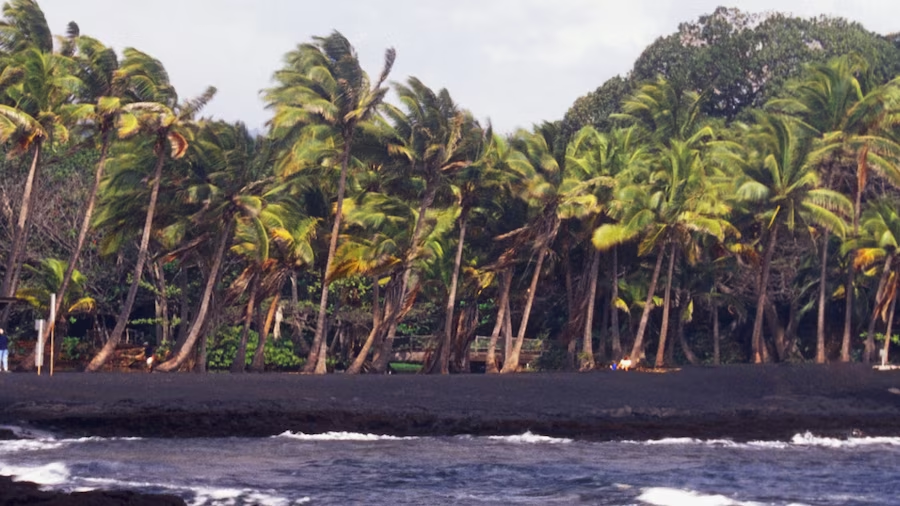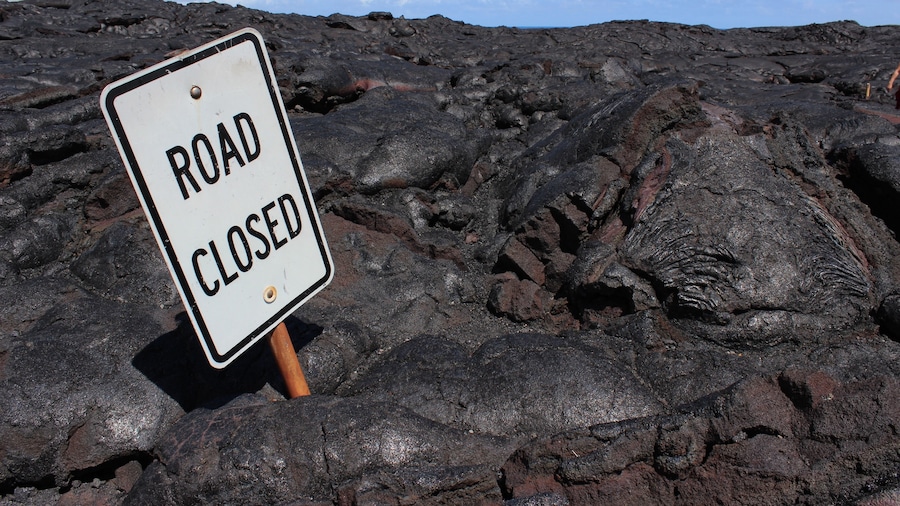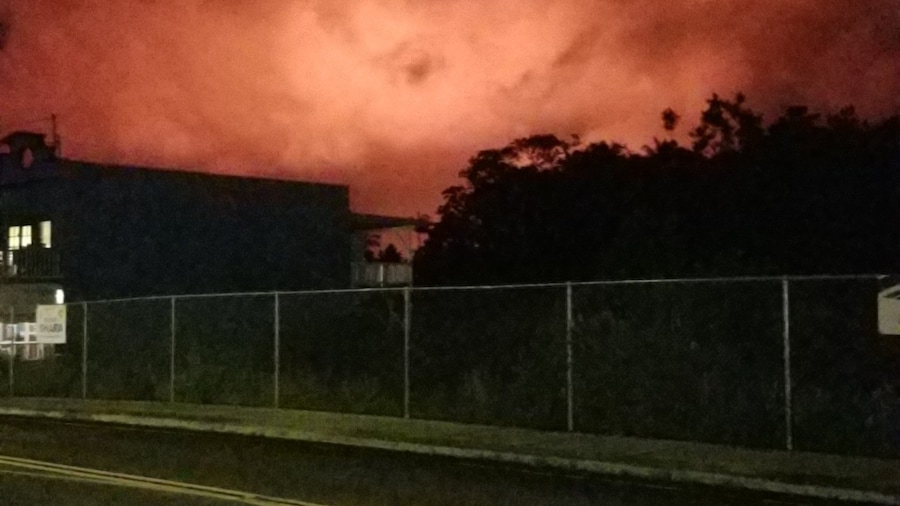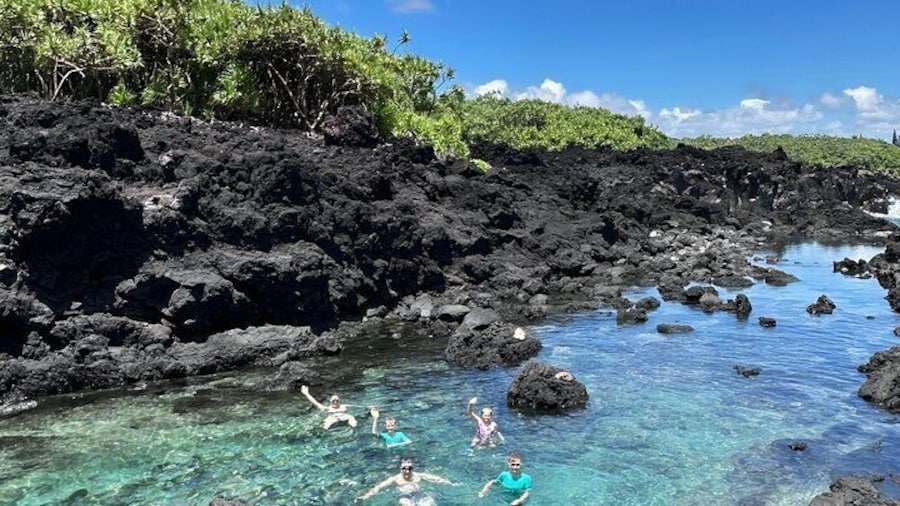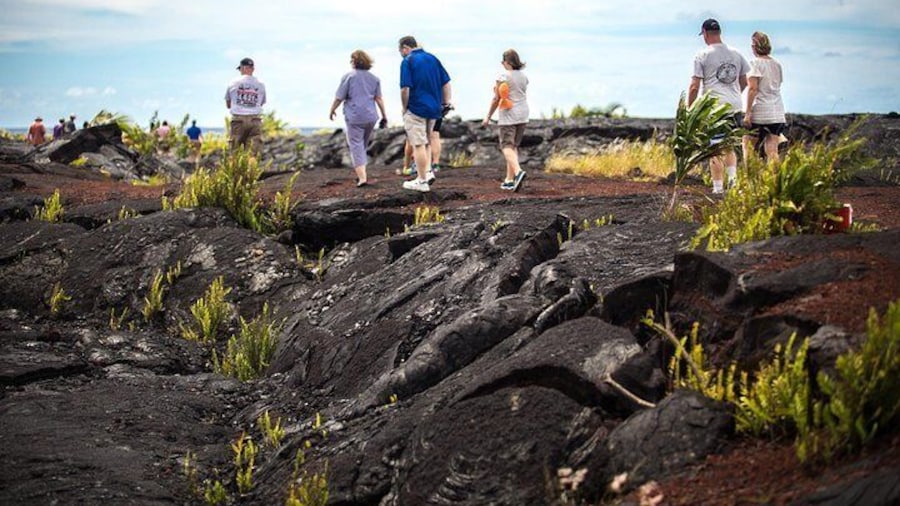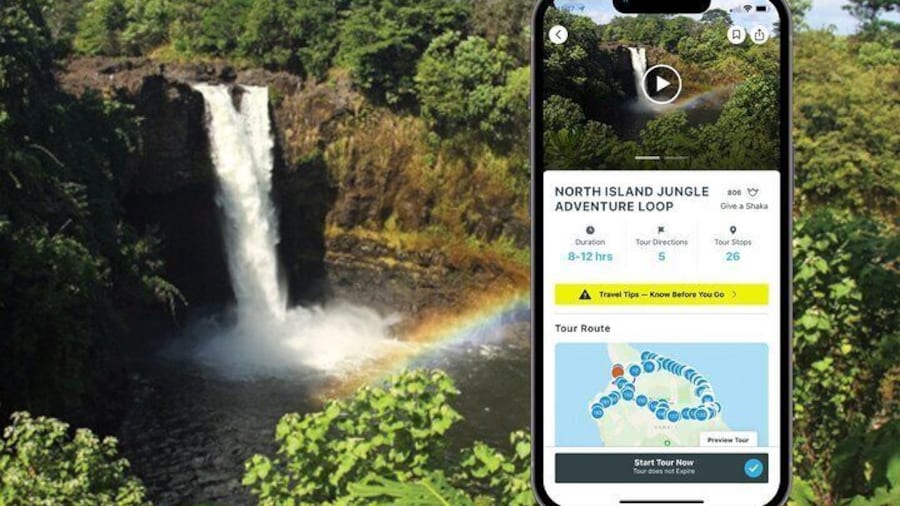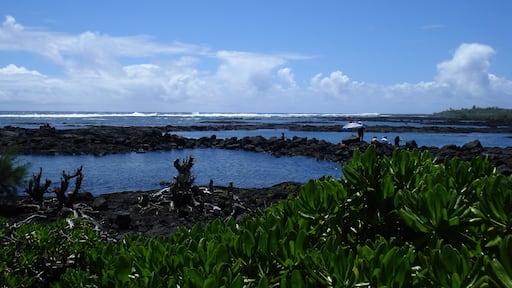Fresh farm produce, turn-of-the-century architecture, charming art and craft galleries and stunning volcanic wilderness await in this scenic Puna district town.
Visit the town of Pāhoa on the eastern side of Hawai’i’s Big Island to find a magnificent historical site filled with ancient Hawai’ian heritage and allegory. Pāhoa’s rich history is woven into its landscape, where fertile volcanic soil sustains lush corridors of tropical forest. Enjoy the beautiful scenery and explore the quaint sugar-boom town, which has become an enclave for artists and musicians since the 1960s.
Explore Downtown Pāhoa to see the town’s mix of Victorian and western architecture, with brightly colored façades and raised wooden sidewalks. Located on the island’s old railway crossroads, the town flourished during the sugar industry boom. Today, it is a charming agricultural center with weekly markets.
Visit Pāhoa on a Sunday to enjoy the local farmers market. Find fresh produce, tropical flowers, exotic plants, freshly cooked food and goods from around the region. Try the local papaya salad or collect souvenirs such as T-shirts, paintings or jewelery.
Navigate the town’s perimeter to discover the eastern coast’s breathtaking beauty. Visit the Kapoho Tide Pools to find a magnificent underwater world and see brightly hued corals using your face mask and snorkel. Stop by Kalapana Beach to see black lava sand or visit Kehena Beach to look out over clear waters for whales in winter. Therapeutic warm springs can be found at nearby Ahalanui Park.
Head inland to Lava Tree State Park, a lush forested park and intriguing geological wonder. Stroll along the park’s 0.7-mile (1.1-kilometer) loop nature trail and see lava-rock casts of trees that were engulfed in the 1790 Kilauea volcanic eruption. Take a daytrip or tour to Volcanoes National Park, approximately one hour’s drive from Pāhoa. Explore hiking trails through stunning volcanic forests.
Pāhoa is located in the picturesque Puna district on the Big Island’s eastern tip. Reach Pāhoa by car or charter tour. Enjoy a trip off the usual tourism trail in leafy Puna. Visit Pāhoa in February or between September and October to avoid peak-season crowds.











